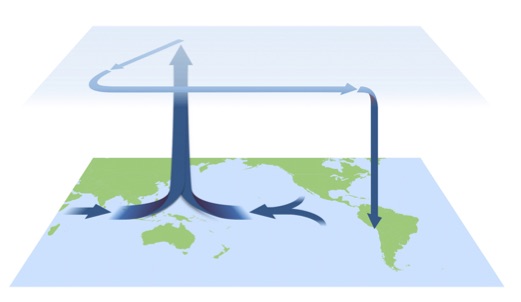The large-scale air circulation in the tropics is traditionally represented by a closed north-south cell averaged over all longitudes (the Hadley circulation). However, differences in temperature between land and sea cause significant variations in the circulation at different longitudes. The variations evoke questions about where and when the large-scale tropical circulation occurs. In this study, we combine two approaches: the first, looking at the local components of the flow, and the second, tracking air parcels following their path in the atmosphere. The combined analysis reveals the actual flow pattern that can be described as a conveyor belt circulating the air in the tropics. The Indo-Pacific region is the engine of this circulation, where air converges and ascends, then moves westward and southward (northward) in July (January), merges into the jet stream at approximately 25◦S (25◦N) and moves rapidly to the east, eventually descending near the Americas.

A schematic of the dominant path of air parcels participating in the large-scale tropical conveyor for July. The air parcels converge into the Indo-Pacific, ascend, move to the west and to the south, merge into the jet stream, and move east, eventually descending near the Americas.


